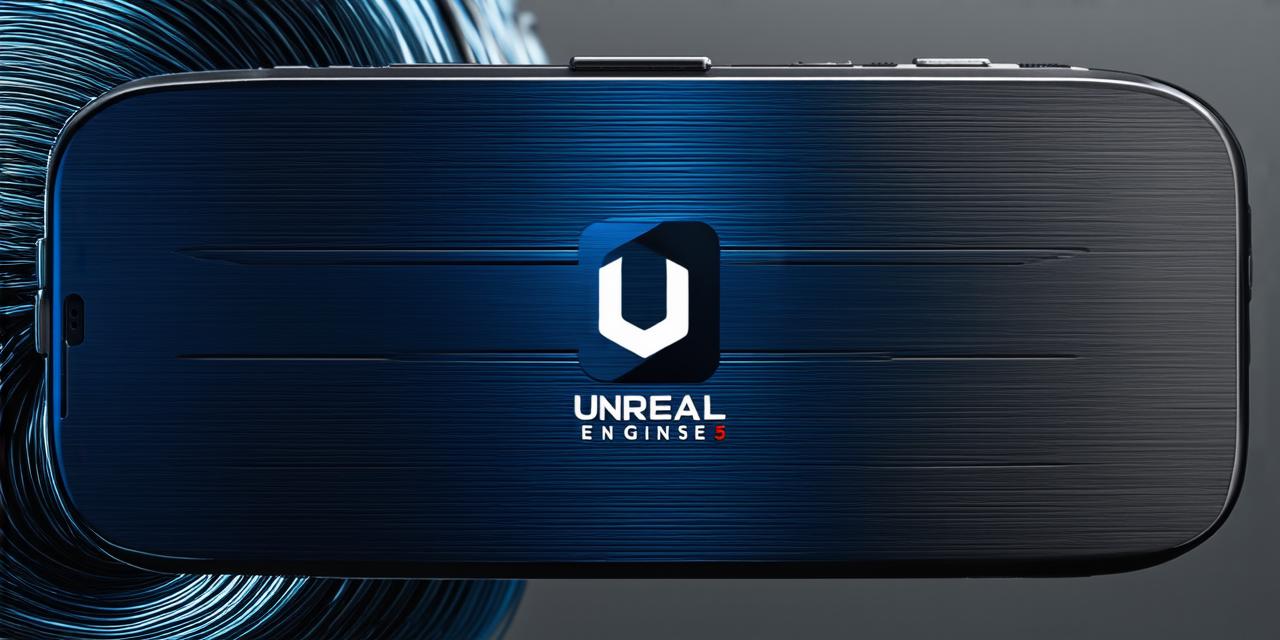Unreal Engine 5 (UE5) is a cutting-edge game engine that has gained immense popularity among developers due to its advanced features and capabilities. While it was initially designed for creating high-performance games, UE5 has also been successfully used in the development of mobile applications.
Introduction
Mobile app development is a rapidly growing industry that offers developers a unique opportunity to reach a global audience through their smartphones and tablets. With the increasing popularity of mobile devices, it’s no surprise that mobile apps have become an integral part of our daily lives. However, developing a mobile app can be a challenging task, especially when it comes to creating visually stunning and interactive experiences.
Unreal Engine 5 has emerged as a popular tool for mobile app development due to its advanced features such as real-time rendering, physics simulation, and AI capabilities. In this guide, we will delve into the world of Unreal Engine 5 and explore how it can be used to create engaging and interactive mobile apps. We will cover topics such as creating 3D models, implementing animations and visual effects, and optimizing app performance for different devices.
Getting Started with Unreal Engine 5
Before diving into the world of mobile app development with UE5, it’s essential to familiarize yourself with the engine’s basic features and functionalities. Here are some key steps to get started:
- Install UE5: Download and install the latest version of Unreal Engine 5 from the Epic Games Launcher. Make sure you have a compatible graphics card and sufficient system requirements.
- Create a new project: Open UE5 and create a new project by selecting “Create New Project” and choosing the type of project you want to create (e.g., mobile app, 3D model, etc.).
- Explore the Editor: The UE5 editor is the central hub where you will spend most of your time creating your app. Familiarize yourself with the interface and navigate through the different tabs and menus.
- Create your content: Use the tools available in the editor to create 3D models, textures, animations, and other assets that will be used in your app. You can also import existing content from other sources.
- Set up your project settings: Configure your project settings such as resolution, aspect ratio, and other display-related options to ensure your app looks great on different devices.
- Implement your code: Use the Blueprint visual scripting system or C++ programming language to write the code for your app’s logic and behavior.
- Test and optimize: Test your app thoroughly on different devices to identify any issues or performance bottlenecks. Optimize your app’s code and assets to improve its performance and reduce load times.
Creating 3D Models with UE5
One of the most powerful features of Unreal Engine 5 is its ability to create high-quality 3D models quickly and efficiently. Here are some key steps to get started:
- Use the Sculpting tools: UE5 comes with advanced sculpting tools that allow you to create complex shapes and details with ease. You can use these tools to model characters, objects, and other assets that will be used in your app.
- Apply materials and textures: Once you have created your 3D models, you can apply materials and textures to give them a realistic look. UE5 comes with a wide range of pre-made materials and textures that you can use or create your own.
- Use Blueprints or C++: You can use either the Blueprint visual scripting system or C++ programming language to animate your 3D models. Blueprint is a great tool for beginners, while C++ offers more control and performance for advanced users.
- Export your models: Once you are satisfied with your 3D models, you can export them in various formats such as FBX, OBJ, or COLLADA, which can be imported into other software or used in your app directly.
Implementing Animations and Visual Effects
Animations and visual effects are essential for creating engaging and interactive mobile apps. Unreal Engine 5 provides a wide range of tools and features to implement animations and visual effects in your app.
- Create animations using Blueprints: UE5 comes with an extensive library of animation blueprints that you can use to create complex animations for your 3D models. You can also create custom animations using the Blueprint visual scripting system.
- Use particle systems: Particle systems are a powerful tool for creating visual effects such as explosions, smoke, and other particle-based effects. UE5 comes with advanced particle systems that you can use to create stunning visual effects in your app.
- Implement lighting and shadows: Lighting and shadows are essential for creating a realistic and immersive environment in your app.
